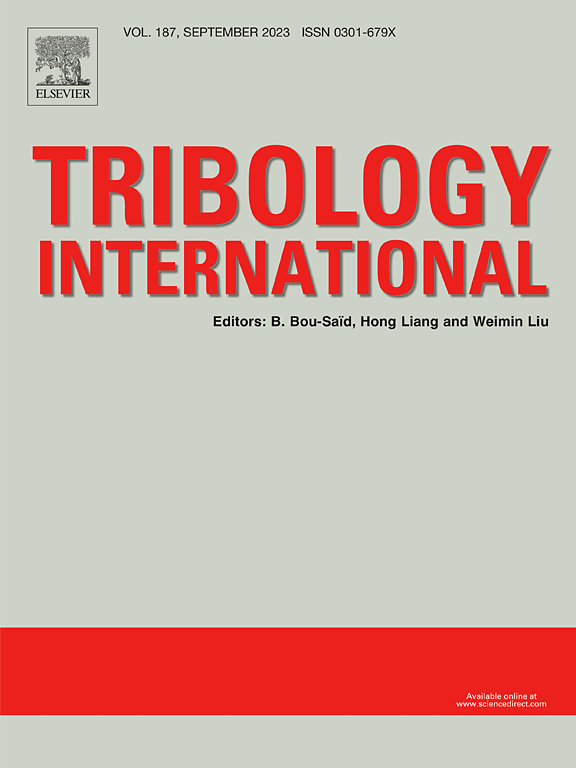Atomic surface of AlSi10Mg produced by novel green chemical mechanical polishing using hybrid abrasives and material removal mechanism elucidated by nanoscratching
IF 6.1
1区 工程技术
Q1 ENGINEERING, MECHANICAL
引用次数: 0
Abstract
A new green chemical mechanical polishing (CMP) was developed for AlSi10Mg, including hybrid abrasives of silica, yttria and ceria, polyethylene glycol, sodium metasilicate, threonine and hydrogen peroxide. After CMP, atomic surface with surface roughness Sa of 0.174 nm is achieved, and material removal rate is 21.57 μm/h. Transmission electron spectroscopy (TEM) confirms that the thickness of damaged layer is 3.4 nm. To the best of our knowledge, surface roughness and thickness of damaged layer of AlSi10Mg are both the lowest, compared with those published hitherto. Nanoscratching was conducted by molecular dynamics simulations. When the nanoscratching depth decreased from 3 to 2 nm, the thickness of damaged layer reduced from 3.9 to 3.4 nm, which agrees well with characterizations of TEM.
新型混合磨料绿色化学机械抛光制备AlSi10Mg的原子表面,并通过纳米划痕研究材料的去除机理
采用二氧化硅、氧化钇和二氧化铈、聚乙二醇、偏硅酸钠、苏氨酸和过氧化氢混合磨料,研制了一种新型的AlSi10Mg绿色化学机械抛光(CMP)。经CMP处理后,获得表面粗糙度Sa为0.174 nm的原子表面,材料去除率为21.57 μm/h。透射电子能谱(TEM)证实损伤层厚度为3.4 nm。据我们所知,AlSi10Mg的表面粗糙度和损伤层厚度都是迄今为止发表的最低的。采用分子动力学方法模拟纳米划痕。当纳米划伤深度由3 ~ 2 nm减小时,损伤层厚度由3.9 ~ 3.4 nm减小,与TEM表征结果吻合较好。
本文章由计算机程序翻译,如有差异,请以英文原文为准。
求助全文
约1分钟内获得全文
求助全文
来源期刊

Tribology International
工程技术-工程:机械
CiteScore
10.10
自引率
16.10%
发文量
627
审稿时长
35 days
期刊介绍:
Tribology is the science of rubbing surfaces and contributes to every facet of our everyday life, from live cell friction to engine lubrication and seismology. As such tribology is truly multidisciplinary and this extraordinary breadth of scientific interest is reflected in the scope of Tribology International.
Tribology International seeks to publish original research papers of the highest scientific quality to provide an archival resource for scientists from all backgrounds. Written contributions are invited reporting experimental and modelling studies both in established areas of tribology and emerging fields. Scientific topics include the physics or chemistry of tribo-surfaces, bio-tribology, surface engineering and materials, contact mechanics, nano-tribology, lubricants and hydrodynamic lubrication.
 求助内容:
求助内容: 应助结果提醒方式:
应助结果提醒方式:


